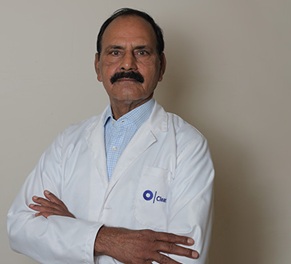Lipoma Removal Treatment: Surgery, Procedure, and Pictures
Dr. Priyanka Sharma

Treatment Duration
20 Minutes
------ To ------45 Minutes
Treatment Cost
₹ 25,000
------ To ------₹ 82,000

Table of Contents
- What is lipoma removal surgery?
- Who needs lipoma removal surgery?
- Benefits of Lipoma Removal Surgery
- Protocol Before and on the Day of Lipoma Removal Surgery
- Lipoma Excision Procedure Steps
- Expectations After Lipoma Removal Surgery
- Risks and Complications of Lipoma Removal Surgery
- Risks of Delay in Lipoma Removal Surgery
- Cost of Lipoma Removal Surgery
- Takeaway
Lipomas are generally benign. If it becomes painful or the size increases, surgical removal becomes necessary. Lipoma removal surgery is a minor procedure to remove multiple lipomas or if they become exceptionally large.
After lipoma removal, the satisfaction rate among patients is 92%, with no instances of recurrence. It resulted in an overall patient satisfaction rate of 89.9% and reduced complications during the short follow-up period.
Read below to know more about lipoma excision, its benefits, the procedure steps, risks and complications, etc.
| Surgery Name | Lipoma Removal |
| Alternative Name | Lipoma Excision |
| Disease Treated | Lipoma |
| Benefits of the Surgery | Advanced and painless procedure, High success rate, No side effects |
| Treated By | Plastic Surgeon, General Surgeon (Dermatologist) |
You can check Lipoma Removal Cost here.
What is lipoma removal surgery?
Lipoma Removal surgery involves the excision of benign fatty deposits known as lipomas from beneath the skin through incisions. Lipomas are harmless lumps of fat cells that remain symptomless and pose no health risks.
Positioned between the skin and underlying muscle tissue, they can be moved easily with pressure. Common sites for lipomas include the neck, shoulders, back, abdomen, arms, and thighs.
Anatomy of the Skin
The skin is the largest external and primary protective organ of the body. It is made up of three layers of tissues. The upper layer is the epidermis, the layer below the epidermis is the dermis, and the third layer is the subcutaneous tissue.
The epidermis provides a waterproof barrier and contributes to skin tone.
The dermis contains connective tissue, hair follicles, blood vessels, lymphatic vessels, and sweat glands.
The subcutaneous tissue (hypodermis) comprises fat and connective tissue.

The skin covers the entire external surface and is a first-order physical barrier against the environment. Its function includes:
Protection: The skin is a barrier against microorganisms, ultraviolet light, and mechanical damage, safeguarding the body.
Sensation: It serves as the primary organ for sensory perception, enabling the detection of pain, temperature, touch, and deep pressure, vital for experiencing and responding to the environment.
Endocrine Activity: Through biochemical processes, the skin produces Vitamin D, crucial for calcium absorption and normal bone metabolism, contributing to overall health.
Immunity: It plays a role in immune system function by developing immunity against pathogens and strengthening the body's defence mechanisms.
Regulation of Temperature: The skin helps regulate body temperature by managing heat retention or dissipation, contributing to thermal comfort and overall homeostasis.
Lipoma Removal Videos by HexaHealth
Expert Doctors (10)
NABH Accredited Hospitals (10)
Lipoma Removal Success Stories


Who needs lipoma removal surgery?
Lipomas are more commonly found in males than females. While they can develop at any age, they are frequently observed during the fourth to sixth decades of life.
Below are the reasons for an individual to consider removing the lipoma:
Increased Size: If the lipoma is growing in size, surgery may be recommended to prevent further enlargement and potential complications.
Pain: Lipomas typically do not cause pain, but surgery may be advised to alleviate discomfort and improve quality of life if they become painful.
Cosmetic Concerns: While lipomas are usually harmless, they can sometimes be aesthetically bothersome if they are prominently located or if their size becomes a cosmetic concern. It prompts consideration for surgical removal.
Benefits of Lipoma Removal Surgery
A lipoma may be difficult to distinguish from more concerning growths. Removing the lipoma through surgery allows for a definitive diagnosis and can rule out more serious conditions. There is no longer a risk of it growing larger or causing problems in the future.
The benefits of lipoma removal are as follows:
Improved Appearance: Lipoma removal surgery can enhance one's appearance by eliminating unsightly lumps or bulges caused by the lipoma. This can boost self-confidence and self-esteem.
Relief from Discomfort: Lipomas can sometimes cause discomfort or pain, especially if they press on nerves or other tissues. Lipoma removal can alleviate this discomfort, allowing individuals to enjoy improved comfort and mobility.
Prevention of Complications: Although lipomas are usually benign, they can grow larger over time and potentially cause complications such as nerve compression or interference with bodily functions. Removing the lipoma early can prevent these complications from developing.
Improved Mobility: Large lipomas can restrict movement, particularly if they are located in areas prone to friction or pressure. Removing the lipoma can restore normal movement and function to the affected area.
Faster Recovery: With advances in surgical techniques and anaesthesia, lipoma removal surgery is generally safe with minimal downtime. Many patients can resume their normal activities shortly after surgery.
Protocol Before and on the Day of Lipoma Removal Surgery
Patients may be curious about lipoma excision surgery. This section offers information about the preparations directed up to and on the day of the procedure.
Before Lipoma Removal Surgery
The surgeon will provide specific instructions on preparing for the procedure. This will ensure the patient has a smooth recovery. The preparation may include the following:
Parameters | Pre-requisites |
Risk Evaluation | Benefits vs risks of the procedure |
Anaesthesia Selection | Local or General |
Mandatory Precautions |
|
On the Day of Lipoma Removal Surgery
On the day of the surgery, the patient will be guided through the necessary steps to ensure their comfort and safety during the procedure.
This may involve wearing appropriate attire, completing required paperwork, and meeting with the surgical team to address last-minute concerns.
Parameters | Pre-requisites |
Consent | Mandatory |
Surgical Preparation |
|
Physical Evaluation | Vitals check-up (Blood pressure, heart rate, oxygen saturation, etc.) |
IV Line | Yes, for administering medications |
Anaesthesia Administration | Local or General anaesthesia |
Lipoma Excision Procedure Steps
Lipoma excision takes 20-45 minutes under local or general anaesthesia, depending on the number of lipomas. Combining liposuction with excision facilitates the complete removal of lipomas through smaller incisions.
Multiple lipomas could be removed without leaving many scars using liposuction, tunnelling, and the squeeze method with minimal incisions.
Lipoma excision procedure steps are as follows:
Preparation: Before surgery, the surgeon marks the outline of the lipoma on the skin surface to guide the procedure. This helps delineate the margins of the tumour, which can become less visible after anaesthesia.
Cleansing and Anaesthesia: The skin is cleansed with an antiseptic solution to prevent infection. Local or general anaesthesia is then administered to numb the area. This helps to reduce pain during the procedure.
Enucleation for Small Lipomas: A small incision, about 3-4 mm, is made over the lipoma. A curette is inserted into the incision to free the lipoma from surrounding tissue gently. Once released, the lipoma is removed through the incision without suturing. A pressure dressing is applied to prevent bleeding.
Excision for Larger Lipomas: Incisions are made in the skin overlying the lipoma, following natural skin lines. The central part of the skin to be removed is held with a clamp to provide traction for tumour removal.
Dissection is performed beneath the skin to reach the lipoma, with care taken to avoid damaging nearby nerves or blood vessels. Once a portion of the lipoma is removed, clamps are attached to the tumour to aid in its complete removal.Final Checks: After removal, the area is checked to ensure complete lipoma removal. Surrounding tissue is palpated to verify that no remnants of the tumour remain.
Expectations After Lipoma Removal Surgery
The patient is shifted to the general ward for monitoring. As it is an outpatient procedure, the patient can go home the same day.
In the Hospital
After the procedure, there's a possibility of a permanent scar. A bandage is applied to lessen the chance of developing a haematoma. The patient receives standard instructions for caring for the wound, which is examined within two to seven days. Depending on where the wound is located on the body, stitches are taken out after seven to 21 days.
The hospital recovery includes:
Post-Surgery Monitoring: After lipoma removal surgery, medical professionals will closely monitor the patient's vital signs and overall condition to ensure a smooth recovery.
Pain Management: Adequate pain relief medication will be administered to alleviate any discomfort or pain experienced by the patient following the surgery.
Wound Care: Healthcare providers will dress the surgical site appropriately and provide instructions on how to keep the wound clean and dry to prevent infection.
Physical Activity: Patients may be encouraged to engage in gentle movements and activities to promote blood circulation and prevent stiffness.
At-home Recovery
Patients can facilitate a smooth recovery process by following the post-discharge guidelines. These include:
Medication Adherence: Patients should strictly adhere to prescribed medications. It includes pain relievers and antibiotics to manage pain and prevent infections.
Rest: Ample rest is essential for the body to heal properly. Patients are advised to avoid strenuous activities and prioritise relaxation during the initial recovery phase.
Wound Care Continuation: Patients must continue to care for the surgical site at home by keeping it clean and dry, changing dressings as instructed, and monitoring for any signs of infection, such as redness, swelling, or discharge.
Healthy Lifestyle: Maintaining a healthy lifestyle by eating nutritious foods, staying hydrated, and avoiding smoking and excessive alcohol consumption can support the body's healing process.
First Follow-up
The first follow-up will be scheduled within 7 to 10 days after surgery. Attending this appointment is crucial for ensuring proper healing and addressing any early concerns or issues that may arise post-surgery.
Assessment of Healing Progress: The healthcare provider will examine the surgical site to ensure initial healing without complications.
Pain Evaluation: The patient's pain levels will be assessed, and adjustments to pain management medication may be made if necessary.
Discussion of Symptoms: The patient will have the opportunity to discuss any concerns or symptoms experienced since the surgery.
Risks and Complications of Lipoma Removal Surgery
Lipoma surgery is generally safe, but every surgery has some risks. A few rare complications include:
Surgical Site Infection: Lipoma removal surgery carries a risk of infection, which can manifest as cellulitis or fasciitis. These infections can cause redness, swelling, warmth, and pain at the surgical site. Prompt treatment is necessary to prevent complications.
Bruising: There may be bruising (ecchymosis) around the incision site after surgery. This is a normal part of the healing process and heals independently within a few days to weeks.
Haematoma Formation: In some cases, blood may accumulate under the skin, forming a hematoma. This can cause swelling, pain, and discolouration at the surgical site. Small hematomas may resolve itself, but larger ones may require drainage.
Nerve Injury: During surgery, there is a risk of injuring nearby nerves, leading to permanent numbness (paresthesia) or loss of sensation (anaesthesia) in the affected area. This can affect mobility and sensation in the surrounding tissues.
Vascular Compromise: Surgery to remove a lipoma may inadvertently damage nearby blood vessels, leading to decreased blood flow (vascular compromise) to the area. This can result in tissue damage and delayed healing.
Muscle Injury: Surgery near muscles can occasionally lead to muscle injury or irritation, resulting in pain and limited mobility. Physical therapy may be necessary to aid in recovery.
Fat Embolus: In rare cases, fat tissue dislodged during surgery can enter the bloodstream and travel to other body parts, causing a fat embolus. This can potentially lead to serious complications such as pulmonary embolism.
Seroma: Fluid accumulation (seroma) can occur at the surgical site, causing swelling and discomfort. Small seromas may resolve on their own, but larger ones may require drainage to prevent infection and promote healing.
When to see a doctor?
If the stitches break or symptoms suggestive of an infection, like those mentioned, arise, it's crucial to discuss these concerns with the doctor:
Infection: Lipoma removal surgery, like any surgical procedure, carries a risk of infection. Signs of infection include fever, chills, redness, swelling, and pus formation at the surgical site. Prompt medical attention is necessary if any of these symptoms occur.
Skin Irritation: Following lipoma removal, the skin around the surgical site may become itchy, swollen, or irritated as part of the healing process. This is usually temporary and can be managed with proper wound care and prescribed medications if necessary.
Nausea and Vomiting: Anaesthesia and post-operative medications can sometimes cause nausea and vomiting in patients. These symptoms typically subside as the effects of anaesthesia wear off, but they should be reported to healthcare providers if they persist or worsen.
Risks of Delay in Lipoma Removal Surgery
In many cases, small and asymptomatic lipomas may not require removal. However, a healthcare provider might suggest removal as a suitable option for the following reasons:
Increased Size: Delaying lipoma removal surgery can make the lipoma grow larger over time. As it expands, it may become more noticeable or cause discomfort due to pressure on surrounding tissues.
Pain and Discomfort: Larger lipomas can exert pressure on nerves and surrounding structures, resulting in pain and discomfort. Delaying surgery may prolong these symptoms and affect the individual's quality of life.
Cosmetic Concerns: Lipomas that continue to grow may become more prominent and affect the individual's appearance. This can lead to self-consciousness or dissatisfaction with one's physical appearance.
Complications During Surgery: In some cases, surgically removing larger lipomas can be more challenging. Delaying the procedure may increase the complexity of the surgery and the risk of complications such as excessive bleeding or damage to surrounding tissues.
Psychological Impact: Living with a visible or uncomfortable lipoma can have psychological effects, including anxiety, depression, or decreased self-esteem. Prompt lipoma removal can alleviate these psychological burdens and improve overall well-being.
Cost of Lipoma Removal Surgery
The price for removing a lipoma through surgery can range from ₹ 25,000 to ₹ 85,000. This cost can differ depending on several factors, such as:
The number and size of the lipomas
Where the lipoma is located on the body
The specific surgical techniques and equipment employed
The age of the patient
Any additional medical conditions the patient might have
The type of hospital accommodation chosen, whether it's a private room or shared facility
Procedure Name | Estimated Cost |
Lipoma Excision | ₹ 25,000 to ₹ 85,000 |
Takeaway
The formation of a lipoma occurs due to the growth of fatty tissue, and currently, there are no known methods to prevent its development. Lipoma excision might be suggested if the lipoma causes discomfort or aesthetic concerns.
Contact HexaHealth for guidance on the most effective lipoma treatments. We'll support you from understanding the condition to post-surgical care.
Suggested Reads
Frequently Asked Questions (FAQ)
What is lipoma removal surgery?
Lipoma removal is a surgical process where fatty tissue lumps, called lipomas, are carefully removed from under the skin. This procedure is also known as lipoma excision.
What is the approximate duration of lipoma removal surgery?
Is lipoma removal a major surgery?
Lipoma removal is generally considered a minor surgical procedure. It involves making a small incision to remove fatty tissue lumps under the skin.
It is usually performed as an outpatient procedure and does not require a hospital stay.
Does lipoma removal require general anaesthesia?
Generally, lipoma removal surgery is done under local anaesthesia. If the lipoma is large or deep, the surgeon may give general anaesthesia before the surgery.
Who performs lipoma removal surgery?
A qualified surgeon, such as a general or plastic surgeon, performs lipoma removal surgery.
They have the expertise to remove lipomas safely and effectively.
Is it necessary to always get the lipomas removed?
Lipomas don't always need to be removed, especially if they're small and not causing any issues.
However, if they grow larger, become painful, or cause discomfort, a doctor may recommend removal.
Is lipoma removal surgery safe?
Yes, lipoma removal surgery is generally considered safe when performed by a qualified healthcare professional.
However, as with any surgical procedure, some risks are involved, which your doctor can discuss with you beforehand.
What are the advantages of lipoma removal surgery?
Lipoma removal surgery offers the benefit of permanently removing the fatty lump, alleviating discomfort or aesthetic concerns.
Additionally, it minimises the likelihood of any potential complications or growth of the lipoma.
What are the risks associated with lipoma removal surgery?
Lipoma removal surgery is a safe procedure, but as it is a surgical procedure, therefore, certain risks are associated.
Rare complication can include:
- Bleeding
- Bruising
- Pain
- Inflammation
- Muscle injury
- Accumulation of fluid underneath the skin
What is the cost of lipoma removal surgery?
The cost of lipoma removal surgery can range from ₹ 25,000 to ₹ 85,000. It's best to consult HexaHealth for an accurate estimate.
Why does the cost of lipoma removal surgery vary for different patients?
The cost of lipoma removal surgery can vary depending on factors such as the size and location of the lipoma, the surgical technique used, and the healthcare provider's fees.
Factors like insurance coverage and geographical location may also influence the overall cost for different patients.
Do I have to stay in the hospital after the lipoma removal surgery?
No, the patient can go home on the same day of the surgery. However, in some conditions, the patient may also have to stay 24 hours in the hospital.
What happens if I do not opt for lipoma removal surgery?
The lipoma may continue to grow or cause discomfort without surgery, but it won't typically lead to serious health complications.
However, monitoring any changes and consulting with a healthcare provider is recommended.
Is there any particular diet I should follow to avoid lipoma?
There's no specific diet known to prevent lipomas, but maintaining a balanced diet rich in fruits, vegetables, and lean proteins may help promote overall health.
Limiting the intake of processed foods and unhealthy fats could reduce the risk of developing lipomas.
Lipoma Removal Cost Videos
More Treatment options
References
All the articles on HexaHealth are supported by verified medically-recognized sources such as; peer-reviewed academic research papers, research institutions, and medical journals. Our medical reviewers also check references of the articles to prioritize accuracy and relevance. Refer to our detailed editorial policy for more information.
- Ramakrishnan K. Techniques and tips for lipoma excision. Am Fam Physician. 2002 Oct 15;66(8):1405. PMID: 12408416.

- Stagno d’Alcontres F, Pardo A, Stracuzzi G. On parosteal lipomas of the limbs. Minerva Chir [Internet]. 1996 [cited 2023 May 24];51(7–8):607–16.

- Charifa A, et al. Lipoma pathology. Bethesda (MD): National Center for Biotechnology Information (US); 2021.

- American Academy of Dermatology Association. Lipoma. Schaumburg (IL): American Academy of Dermatology Association; 15 April 2023.

- Copeland-Halperin LR, Pimpinella V, Copeland M. Combined liposuction and excision of lipomas: long-term evaluation of a large sample of patients. Plast Surg Int [Internet]. 2015 [cited 2023 May 24];2015:625396.

- National Organization for Rare Disorders. Lipoma. Danbury (CT): National Organization for Rare Disorders; 2022.

- Al-Mnayyis A, Al Sharie S, Araydah M, Talafha M, Haddad F. Parosteal lipoma of the forearm: A case report and a literature review. Medicine (Baltimore). 2021 Nov 19;100(46):e27876.

- Peev I, Spasevska L, Mirchevska E, Tudzarova-Gjorgova S. Liposuction assisted lipoma removal – option or alternative? Open Access Maced J Med Sci [Internet]. 2017 [cited 2023 May 24];5(6):766–70.

- Bancroft LW, Kransdorf MJ, Peterson JJ, O’Connor MI. Benign fatty tumors: classification, clinical course, imaging appearance, and treatment. Skeletal Radiol [Internet]. 2006;35(10):719–33.

Last Updated on: 10 July 2024
Reviewer

Dr. Priyanka Sharma
MBBS, DNB Plastic Surgery, Training in Hand and Microvascular Surgery, Training in Hair Transplant
15 Years Experience
Dr Priyanka Sharma is a highly regarded Plastic, Reconstructive, and Aesthetic Surgeon with over 15 years of experience.
She is currently associated as a Consultant with:<...View More
Author

She has extensive experience in content and regulatory writing with reputed organisations like Sun Pharmaceuticals and Innodata. Skilled in SEO and passionate about creating informative and engaging medical conten...View More
Lipoma Removal in Top Cities
Lipoma Removal Cost in Top Cities
Latest Health Articles





























